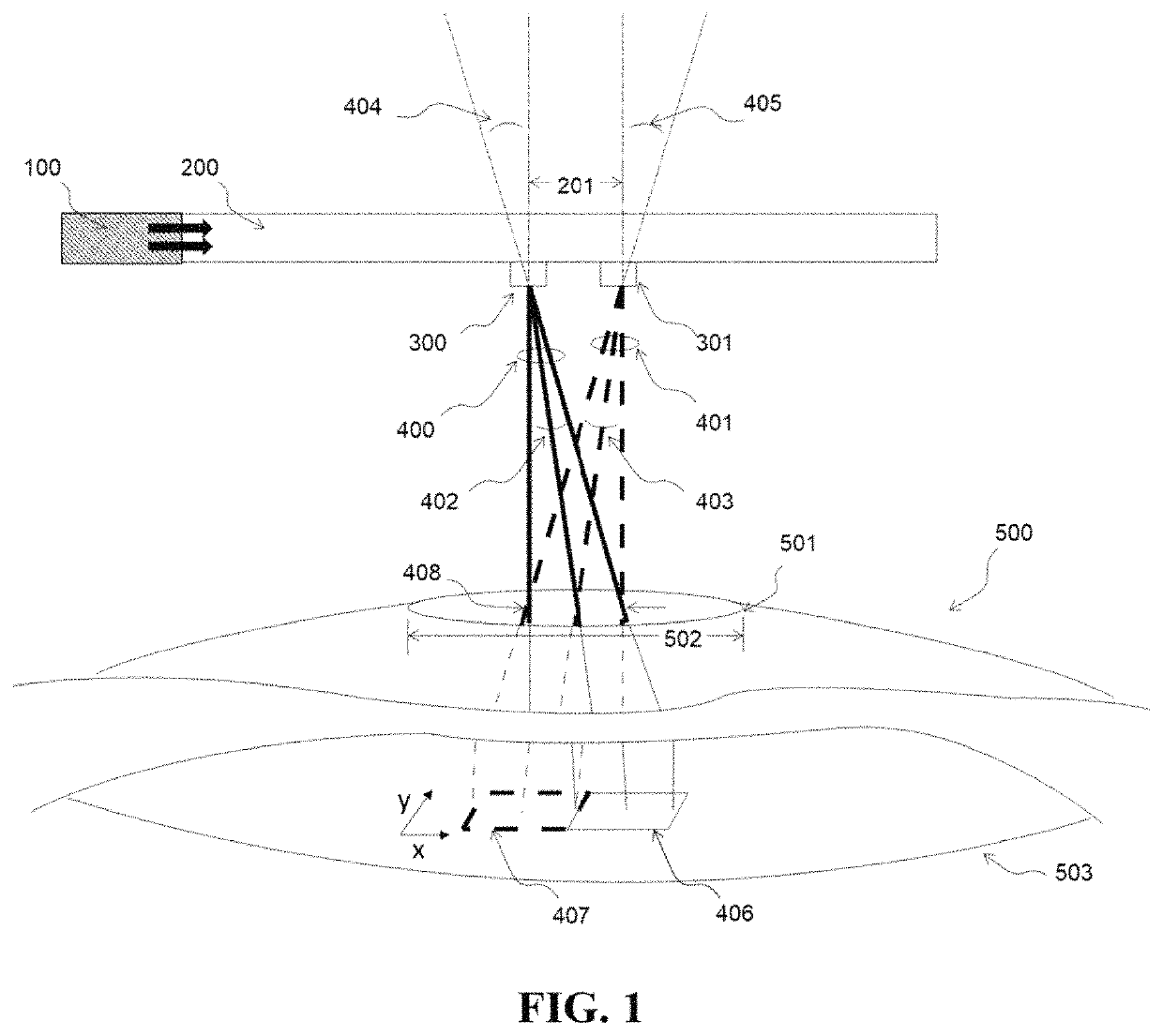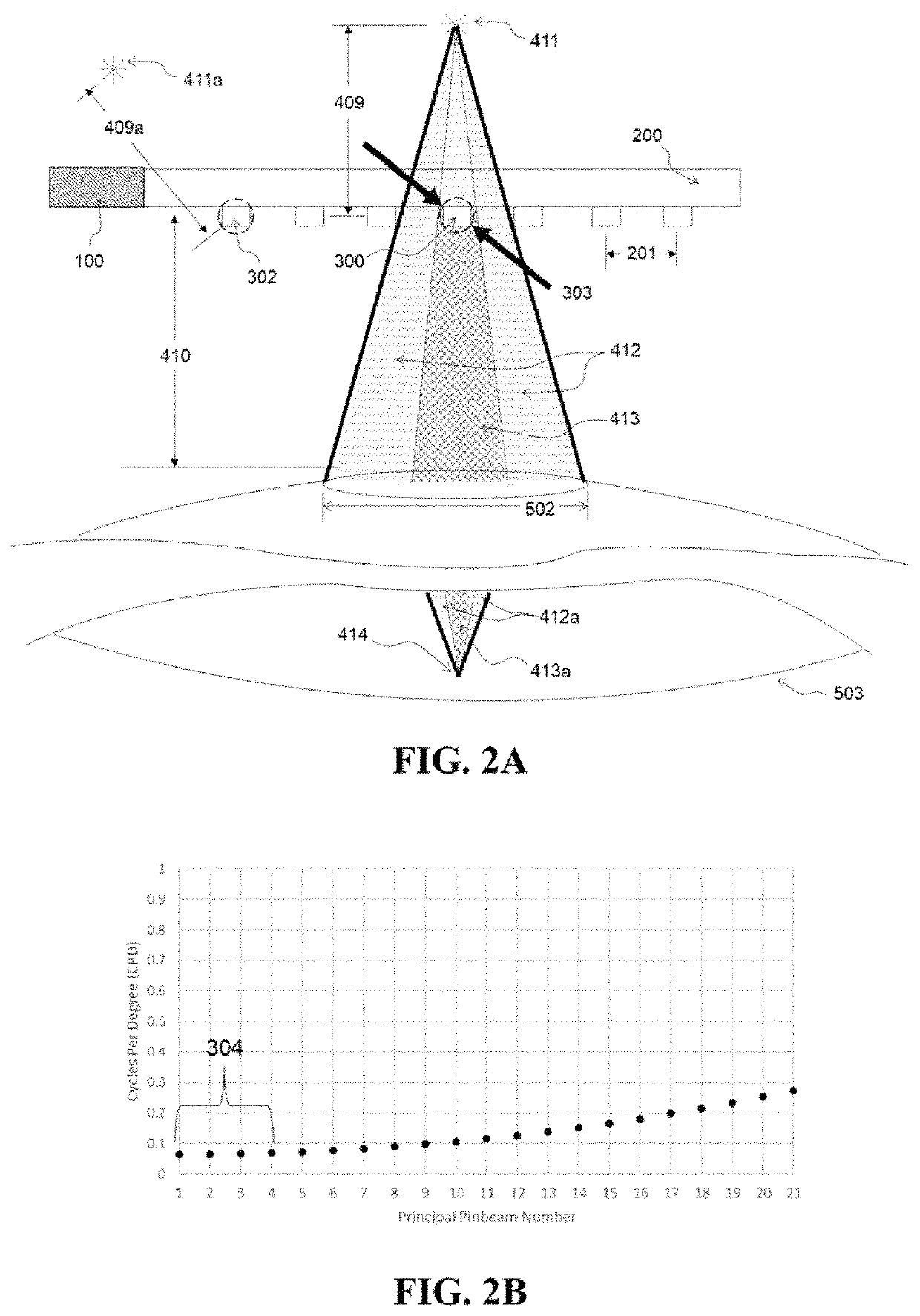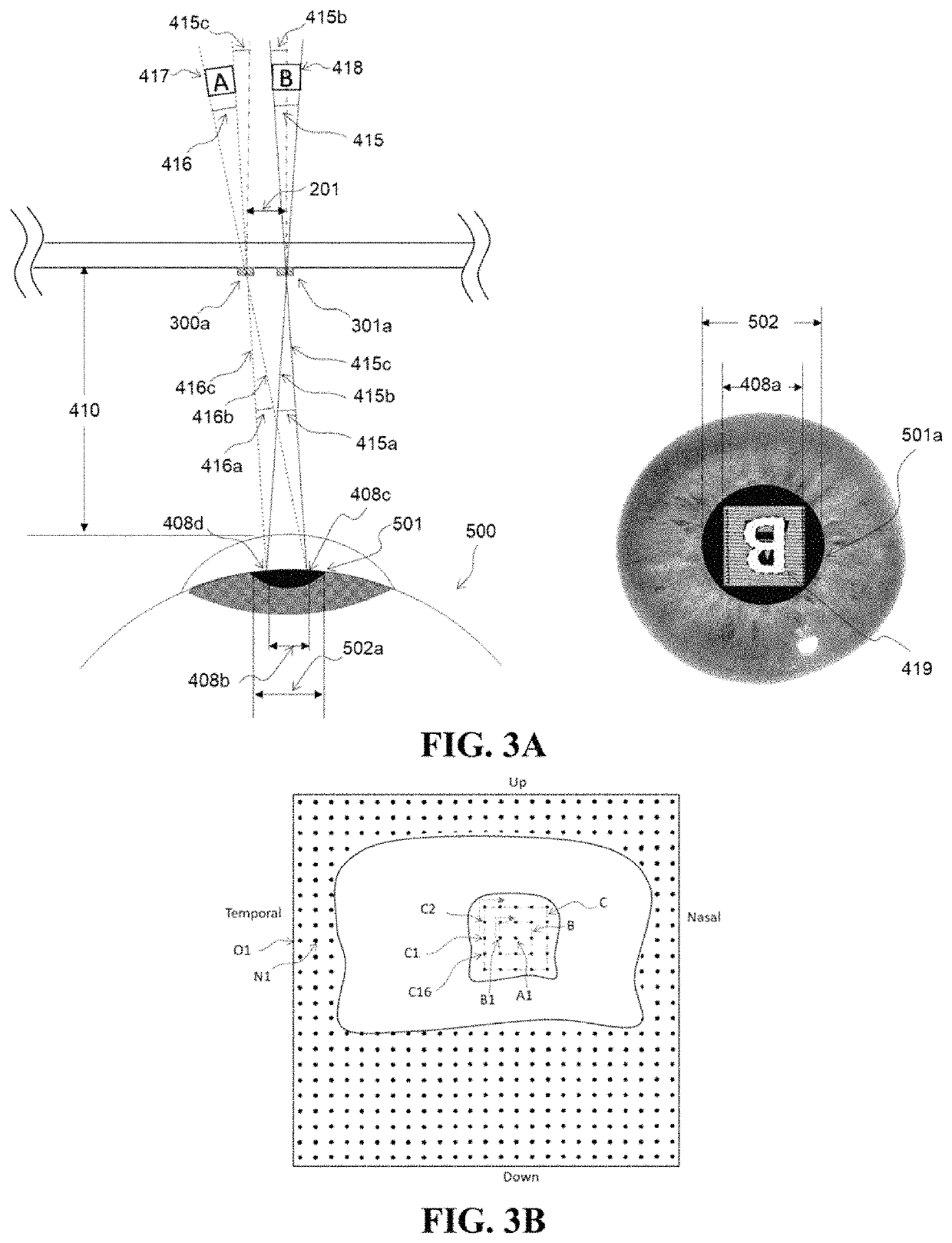Near eye wavefront emulating display
a display system and near eye technology, applied in the field of near eye display systems, can solve the problems of inability to provide a display system capable of overlaying high-resolution virtual content over the entire, inability to achieve the critical angle of waveguide material, and inability to achieve the practical use of this display system for ar applications
- Summary
- Abstract
- Description
- Claims
- Application Information
AI Technical Summary
Benefits of technology
Problems solved by technology
Method used
Image
Examples
Embodiment Construction
[0039]A system providing a near-eye display for augmented and virtual reality imaging is described. Referring to the figures, wherein like numerals indicate like or corresponding parts throughout the several views, a near eye display lens 200 is supplied with image forming information transmitted from an image signal generating element 100 attached to the edge of the display lens. The lens is generally placed in front of an exemplary human eye 500 as shown in cross-sectional view of FIG. 1. For simplicity, the middle section of the eye has been removed, but it is understood that light rays transmitted through the eye pupil 501, also pass through and are optically redirected by the lens of the eye. The image signal is comprised on precise temporal (i.e. light intensity pulsing) and spatial (i.e. light directional scanning) modulation necessary for light transmitted through the lens from a collimated light emitting element (not shown) to form an image on the eye retina 503. The collim...
PUM
 Login to View More
Login to View More Abstract
Description
Claims
Application Information
 Login to View More
Login to View More - R&D
- Intellectual Property
- Life Sciences
- Materials
- Tech Scout
- Unparalleled Data Quality
- Higher Quality Content
- 60% Fewer Hallucinations
Browse by: Latest US Patents, China's latest patents, Technical Efficacy Thesaurus, Application Domain, Technology Topic, Popular Technical Reports.
© 2025 PatSnap. All rights reserved.Legal|Privacy policy|Modern Slavery Act Transparency Statement|Sitemap|About US| Contact US: help@patsnap.com



